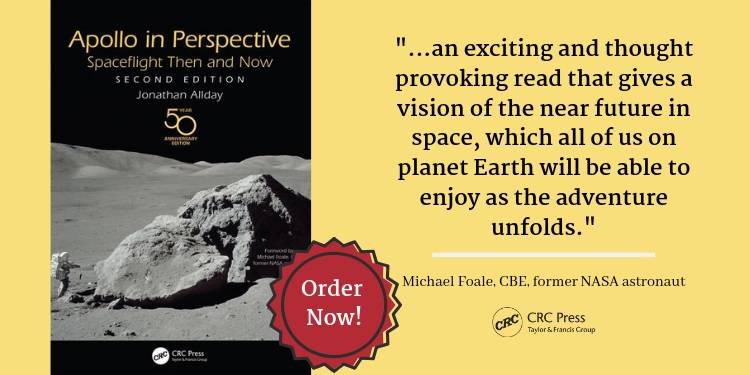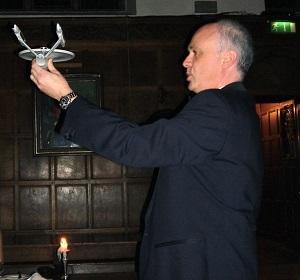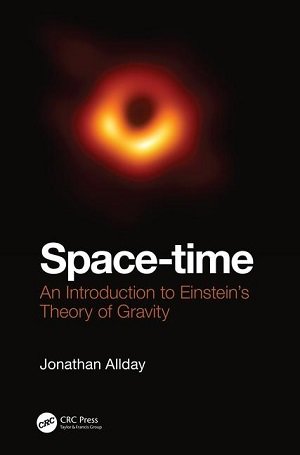Jonathan has released a special edition of Apollo in Perspective, with the foreword written by Michael Foale, (CBE, former NASA astronaut). It marks the 50th anniversary of the Apollo 11 Moon landing in 1969, so in celebration of the anniversay, we have launched a competition to give away 5 FREE copies of the new book!
Earlier this year we caught up with Jonathan to talk about his new book, Space-Time: An Introduction to Einstein's Theory of Gravity, and to chat to him about the history-making first image of a black hole.
Talk us through the importance of capturing the first image of a black hole!
Let’s think for a moment about how this was produced. In scale terms, they have imaged something proportionally the size of an orange on the surface of the Moon. They’ve done it by combining data from radio telescopes around the world. The code that they have had to write and test in order to create the image is astounding. The image itself is slightly underwhelming, it looks like a black hole is generally portrayed in sci fi! I’ve seen it described as the eye of Sauron, which is quite nice. We have far more evidence that black holes exist than we do for big foot, but it’s still nice to have a picture of one smiling at us!
What does this monumental achievement mean to you?
If you spend your time teaching physics in school you focus on physics that’s done and dusted. It’s great to be reminded what an active and exciting subject it is. Despite what some well-known Physicists sometimes say in the media, this subject is far from over and technology is opening up new ways of looking at the universe. I want to start again!
What un-answered questions do you think we can now answer about black holes since capturing the first image?
Probably nothing directly about black holes themselves. Remember that we are not actually ‘seeing’ the event horizon here. The shadow is probably 3-4 times larger than that and represents the edge of the closest stable orbit to the black hole. What we might start to see is more details of the energy production process in the accretion disk of material around the black hole. We know that they can send off hugely powerful jets of material, but we’re not sure how. It would be good to get some observational clues.
What do you think will be the next big discovery in the field?
Well, we have yet to see what they come up with for the supermassive black hole at the centre of our of galaxy. Also LIGO is still detecting gravitational waves from black hole and neutron star mergers. As more gravity wave detectors come online, we might even start to get data from the very early universe. Whole new fields of observational astrophysics and cosmology are opening up. If I had my research time again it’s what I would be looking at. It’s a blend of computer science, practical physics and discovery. A chance to make a mark. What more could a young scientist be looking for?




